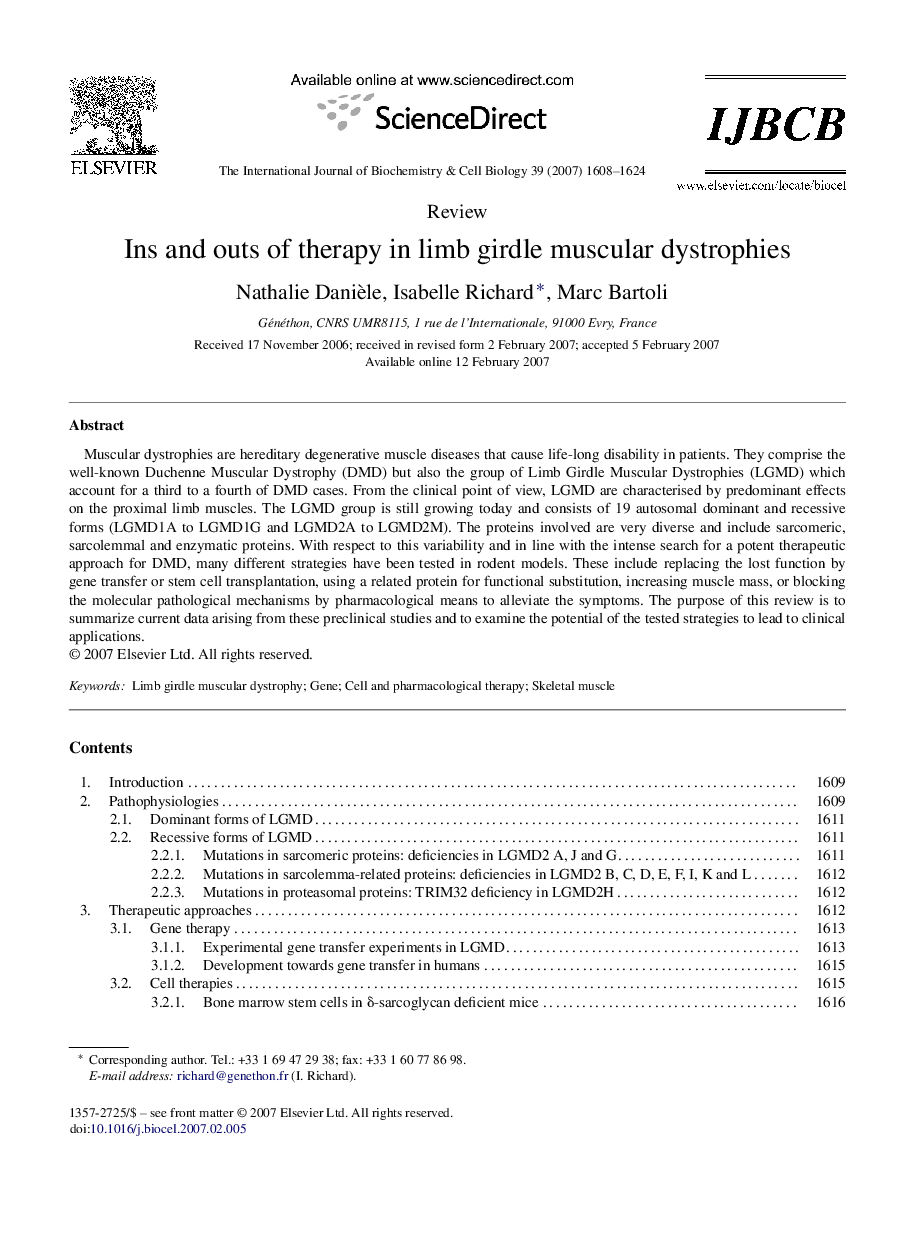| Article ID | Journal | Published Year | Pages | File Type |
|---|---|---|---|---|
| 8326338 | The International Journal of Biochemistry & Cell Biology | 2007 | 17 Pages |
Abstract
Muscular dystrophies are hereditary degenerative muscle diseases that cause life-long disability in patients. They comprise the well-known Duchenne Muscular Dystrophy (DMD) but also the group of Limb Girdle Muscular Dystrophies (LGMD) which account for a third to a fourth of DMD cases. From the clinical point of view, LGMD are characterised by predominant effects on the proximal limb muscles. The LGMD group is still growing today and consists of 19 autosomal dominant and recessive forms (LGMD1A to LGMD1G and LGMD2A to LGMD2M). The proteins involved are very diverse and include sarcomeric, sarcolemmal and enzymatic proteins. With respect to this variability and in line with the intense search for a potent therapeutic approach for DMD, many different strategies have been tested in rodent models. These include replacing the lost function by gene transfer or stem cell transplantation, using a related protein for functional substitution, increasing muscle mass, or blocking the molecular pathological mechanisms by pharmacological means to alleviate the symptoms. The purpose of this review is to summarize current data arising from these preclinical studies and to examine the potential of the tested strategies to lead to clinical applications.
Related Topics
Life Sciences
Biochemistry, Genetics and Molecular Biology
Biochemistry
Authors
Nathalie Danièle, Isabelle Richard, Marc Bartoli,
